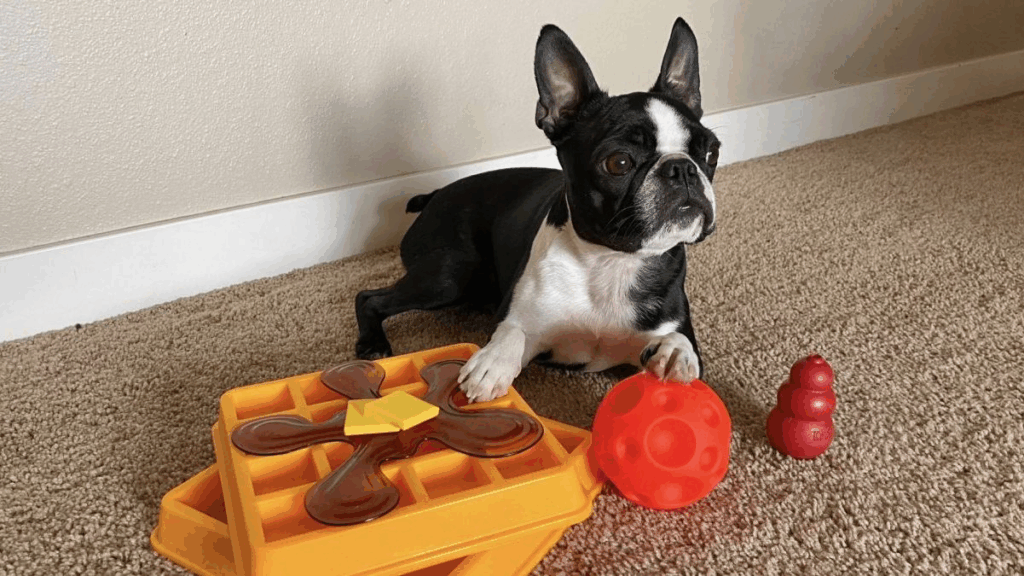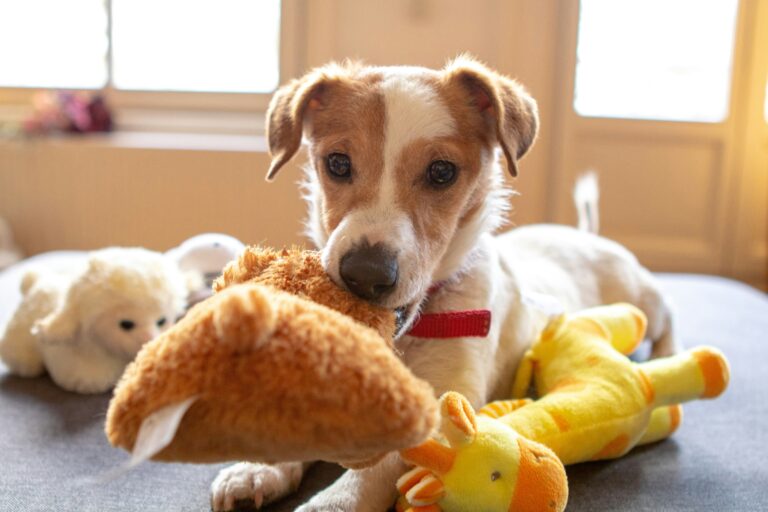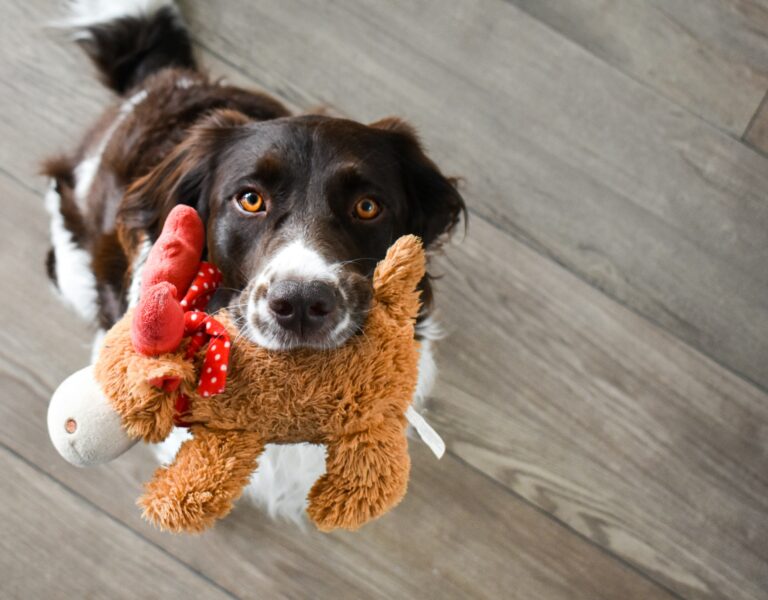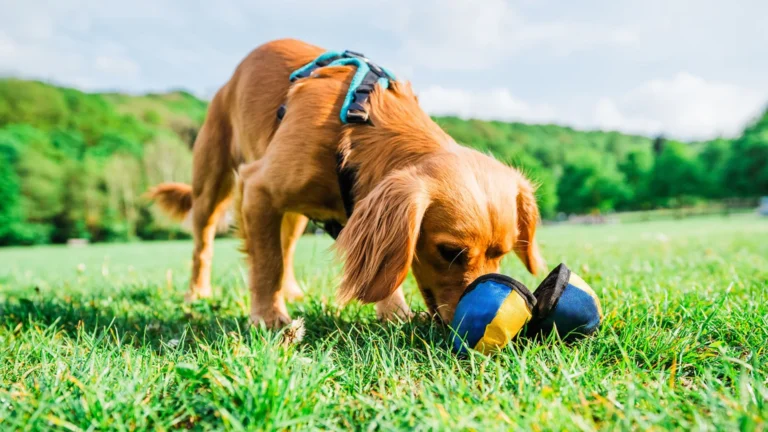In the world of dog ownership, it’s no secret that keeping our canine companions mentally stimulated is key to their overall health and happiness. However, when it comes to small dogs, finding the right toys that engage their intellect and curiosity can be a challenge. That’s where the concept of “Pint-Sized Brain Boosters: Enrichment Toys for Small Dogs” comes into play.
This post will delve into the realm of enrichment toys designed specifically for small dogs. These toys are not only fun but also encourage mental stimulation, keeping your furry friend’s mind sharp and engaged. From interactive puzzle toys to treat-dispensing gadgets, there’s a whole array of items to discover.

Understanding why mental stimulation is so crucial for small dogs is the first step. Mental exercise is just as vital as physical activity, helping to prevent behavior problems, alleviate boredom, and promote overall well-being. Notably, the size and breed of your pet play a critical role in the type of toy you should select, a topic that will be explored further.
Throughout this exploration, there will be a focus on the benefits of these brain-boosting toys and how they can enhance the quality of life for your small dog. The right toy can reduce anxiety, improve problem-solving skills, and even help with training efforts.
Lastly, advice on how to choose the right toy for your specific breed, as well as reviews of top-rated toys in the market, will be provided. So, whether you’re a new pet parent or a seasoned dog lover looking for fresh enrichment ideas, stay tuned to unlock the secret to keeping your small dog mentally stimulated and content with the best toys in the market. 🐾🧠🐶
Exploring the Variety of Enrichment Toys for Small Dogs
Interactive Puzzle Toys
Interactive puzzle toys are designed to challenge a dog’s problem-solving abilities. These toys often require dogs to manipulate parts to access treats, stimulating their cognitive functions. For small dogs, puzzles with adjustable difficulty levels are ideal, allowing you to increase the challenge as your dog becomes more adept. Brands like Nina Ottosson offer a range of puzzle toys suitable for small breeds.
Treat-Dispensing Toys
Treat-dispensing toys combine playtime with rewards, encouraging dogs to engage with the toy to receive treats. These toys can help slow down fast eaters and provide mental stimulation. The KONG Classic is a popular choice, known for its durability and versatility. It’s essential to select a size appropriate for your small dog to ensure safety and effectiveness.
Snuffle Mats
Snuffle mats mimic the foraging behavior of dogs, requiring them to use their sense of smell to find hidden treats within the fabric. This activity engages their natural instincts and provides mental enrichment. Snuffle mats are especially beneficial for small dogs, as they offer a low-impact yet stimulating activity.
Chew Toys
Chew toys serve multiple purposes: they satisfy the natural urge to chew, promote dental health, and provide mental stimulation. For small dogs, it’s crucial to choose chew toys that are appropriately sized and made from safe materials. Options like Nylabone DuraChew are designed to withstand persistent chewing while being gentle on small jaws.
Plush Toys with Hidden Compartments
Plush toys that contain hidden compartments or squeakers can intrigue small dogs, encouraging exploration and play. These toys often combine comfort with stimulation, making them suitable for dogs that enjoy cuddling as well as interactive play. Ensure that the plush toy is durable and free from small parts that could pose a choking hazard.
Incorporating Enrichment Toys into Daily Routine
Scheduled Playtime
Integrating enrichment toys into your small dog’s daily schedule can provide structure and anticipation. Designate specific times for interactive play, ensuring your dog receives consistent mental stimulation. This routine can help reduce anxiety and prevent behavioral issues stemming from boredom.
Rotating Toys
To maintain your dog’s interest, rotate their toys regularly. Introducing a “new” toy by bringing back a previously stored one can reignite curiosity and engagement. This practice prevents overstimulation and keeps playtime fresh and exciting.
Combining Toys with Training
Enrichment toys can be valuable tools during training sessions. Using treat-dispensing toys as rewards reinforces positive behavior and encourages learning. Incorporating toys into training can make sessions more enjoyable and effective for both you and your small dog.
Monitoring and Safety Considerations
Supervision During Play
While enrichment toys are designed to be safe, it’s important to supervise your small dog during playtime, especially when introducing a new toy. Monitoring ensures that the toy is used as intended and allows you to intervene if any issues arise.
Regular Inspection of Toys
Inspect toys regularly for signs of wear and tear. Damaged toys can pose risks, such as choking or ingestion of small parts. Replace any toys that show significant deterioration to maintain a safe play environment.
Appropriate Sizing
Selecting toys that are appropriately sized for your small dog is crucial. Toys that are too large may be difficult to handle, while those that are too small could be swallowed. Always refer to the manufacturer’s guidelines to choose the correct size.
DIY Enrichment Toy Ideas
Homemade Puzzle Feeders
Creating a puzzle feeder at home can be simple and cost-effective. For example, placing treats under plastic cups and encouraging your dog to find them stimulates their problem-solving skills. Ensure that all materials used are safe and non-toxic.
Towel Roll Treat Dispenser
Rolling treats inside a towel and tying it up can create an engaging toy that challenges your dog’s foraging abilities. This DIY toy encourages sniffing and unwrapping behaviors, providing both mental and physical stimulation.
Frozen Treat Toys
Filling a suitable toy with a mixture of treats and dog-safe peanut butter, then freezing it, can offer a longer-lasting challenge. This method is particularly useful for keeping your small dog occupied during warmer months.

Understanding Your Small Dog’s Preferences
Observing Play Styles
Pay attention to how your small dog interacts with different toys. Some may prefer toys that involve problem-solving, while others might enjoy those that cater to their chewing instincts. Understanding their preferences allows you to select toys that will be most engaging for them.
Adjusting to Life Stages
As your small dog ages, their play needs and abilities may change. Puppies might require softer toys for teething, while senior dogs may benefit from toys that are gentle on their teeth and joints. Regularly assess and adjust the types of enrichment toys you provide to match their life stage.
Considering Health Conditions
If your small dog has any health issues, such as dental problems or mobility limitations, choose toys that accommodate these conditions. Consulting with your veterinarian can provide guidance on suitable enrichment options that align with your dog’s health needs.
By thoughtfully selecting and incorporating a variety of enrichment toys into your small dog’s routine, you can significantly enhance their mental well-being and overall quality of life. Regularly engaging your dog with appropriate toys not only provides entertainment but also fosters a stronger bond between you and your furry companion.
If you need further assistance or have specific questions about enrichment toys for small dogs, feel free to ask!
Examples of Enrichment Toys for Small Dogs
There are many enrichment toys available for small dogs, each offering different types of mental stimulation.
Interactive Treat Dispensers
Interactive treat dispensers are a great choice for food-motivated dogs. They are designed to release treats or kibble when your dog interacts with them in a certain way. These toys can keep your dog busy for a long time as they figure out how to get the food out.
- KONG Classic Dog Toy: This versatile toy can be filled with treats or kibble, and your dog must work to get the food out.
- Outward Hound Fun Feeder: This slow feeder turns mealtime into a game and slows down eating to aid digestion.
Puzzle Toys
Puzzle toys require your dog to solve a problem or complete a task to get a reward. They are great for smart dogs that enjoy a challenge.
- Nina Ottosson by Outward Hound: These puzzle toys come in various difficulty levels and require your dog to move pieces around to find hidden treats.
- Trixie Pet Products Flip Board: This interactive toy requires your dog to lift and flip compartments to find hidden treats.
Chew Toys
Chew toys provide both physical and mental stimulation. They satisfy your dog’s natural urge to chew while keeping their brain engaged.
- Nylabone DuraChew: These durable chew toys are designed to keep powerful chewers busy for a long time.
- West Paw Design Zogoflex: This tough toy can be stuffed with treats to provide extra mental stimulation.
Creating an Enriching Environment for Your Small Dog
While enrichment toys are a great tool for mental stimulation, they should be just one part of your dog’s enrichment routine. It’s also important to provide plenty of interaction, training, and new experiences to keep your dog’s mind active and engaged.
Social Interaction and Training
Social interaction and training are crucial for mental stimulation. Regular play sessions and training exercises not only strengthen your bond with your dog but also provide mental challenges. Training can be as simple as teaching new tricks or commands, or as complex as agility or obedience training.
New Experiences
New experiences, like visiting new places or meeting new people and animals, can provide a wealth of mental stimulation for your dog. These experiences can help to build your dog’s confidence and adaptability, making them more comfortable in different situations.
In conclusion, enrichment toys are an excellent tool for providing mental stimulation for small dogs. However, they should be used in conjunction with regular training, social interaction, and new experiences to provide a well-rounded enrichment routine.
Enrichment as a Long-Term Strategy for Canine Wellness
Investing in enrichment toys is not a one-time action but an ongoing strategy to promote your dog’s long-term health. Just as humans thrive on intellectual and emotional stimulation, dogs too require constant mental engagement to live their best lives. Over time, incorporating enrichment activities into your dog’s daily routine can help improve focus, encourage learning, and even enhance social behavior when introduced properly.
Consistency is key. Dogs benefit most from mental stimulation when it becomes a regular part of their lives, not just an occasional activity. A structured routine that includes play sessions with enrichment toys can help regulate behavior, reduce hyperactivity, and offer a positive outlet for natural instincts like sniffing, chewing, or problem-solving.
Building Stronger Bonds Through Play
One of the often-overlooked benefits of using enrichment toys is the impact it has on the human-animal bond. Interactive play, whether it’s working on a puzzle toy together or simply supervising your dog during independent play, fosters trust and connection. For small dogs, who often form strong attachments to their owners, these shared experiences are invaluable in building confidence and emotional security.
Owners can also use toys as tools during training sessions, reinforcing obedience or tricks with engaging activities. This approach not only accelerates learning but also makes training more fun for both parties.
Enrichment Beyond Toys
While enrichment toys are incredibly effective, it’s important to remember they are just one piece of a larger puzzle. Daily walks, new experiences, obedience training, and safe socialization with other animals all contribute to a well-rounded enrichment plan. Dogs, like people, appreciate variety and novelty. Incorporating different types of stimulation—sensory, physical, social, and cognitive—creates a more complete and fulfilling lifestyle.
A Commitment to Quality of Life
Ultimately, using enrichment toys for your small dog is about more than keeping them busy—it’s about committing to their quality of life. These toys empower dogs to explore, learn, and express themselves in healthy ways. They help manage stress, prevent behavioral issues, and ensure that even the smallest canine companions feel confident, fulfilled, and loved.
Choosing the right enrichment tools may take some experimentation, but the rewards are immense. A dog who feels challenged and engaged is more likely to be calm, content, and well-adjusted in all areas of life. For that reason alone, enrichment toys are one of the most meaningful gifts any dog owner can offer their furry friend.



